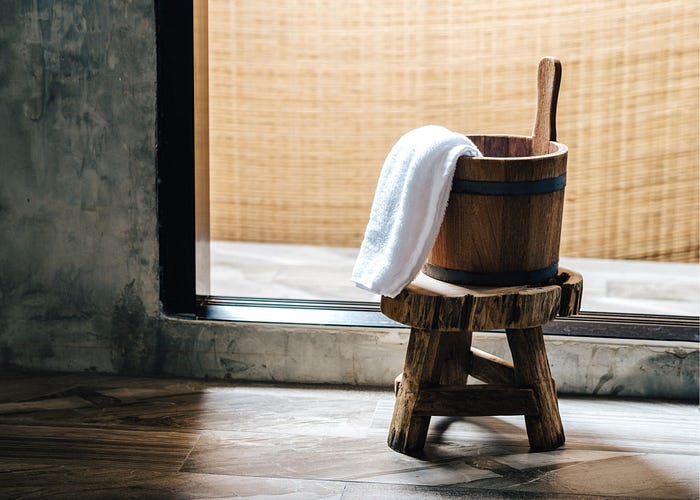Japanese Bathing
The anthropologist Scott Clark once wrote, “to take a bath in Japan with an understanding of the event is to experience something Japanese. It is to immerse oneself in culture as well as water.” What he’s referring to displays the inextricable link between Japanese culture and bathing, as well as the rich spiritual history and cultural identity it involves when examined further. The rituals and habits of Japanese people cannot be so easily categorized into time periods, but one will find continuity in Japanese bathing as a spiritual experience, social tradition, and religious practice.

As societal, economic, cultural, and religious pressures altered the way Japanese people bathe, two fundamental elements provide the foundation for their modern bathing practices: Sentō and Ofuro. Sento is the Japanese term for public bathhouses and has been a central element for centuries, evolving from the use of volcanic hot springs which occur naturally throughout the region and still remain a major component of Japanese tourism.

Between the 8th and 12th centuries in what is now modern-day Kyoto, charity baths were made available to anyone regardless of their age, social status, or gender, and were a reverential gesture made to ancestors and practitioners. This democratized religious expression is the link between bathing and spirituality within Japanese culture. It is also common in both the Shinto and Buddhist belief systems where the daily practice of bathing is a symbolic and literal expression of removing impurities from one’s life. Public bathing at Buddhist temples would proliferate for another eight centuries before undergoing a shift in the way the Japanese people bathed.

The term Ofuro, which refers to a large bathtub found in most Japanese homes, is now the predominant form of bathing and has been since the mid 20th century. Nightly baths are a beloved tradition in almost every Japanese household as a way to cleanse oneself from the day and enjoy a relaxed sense of well-being prior to going to bed. This practice is seen as a social setting, in which multiple members of a household participate in bathing as a communal experience in a device-free environment to establish familial closeness. The practice is typically done in two phases: the first step is the cleanse which is performed in a small shower scooped with a hinoki wood bucket prior to entering the bath. The idea is to cleanse while outside of the tub, as opposed to the American tradition. This is because the bathwater is usually retained for multiple family members, occurring in a hierarchical sequence. The second phase is the soak, which is done for pure enjoyment, relaxation, and centering; this is where private bathing and more antiquated forms of public bathing find their commonality, as well as the spiritual nature underlying both practices.

WATRLINE is about finding a higher, connective purpose in the way we bathe. It is truly one of the few times in modern life we have the ability to be away from inundating distractions and remain present. The way Japanese cultures have ritualized bathing as a spiritual and rejuvenating practice is to not only be admired but emulated. It is a narrative about public bathing, finding its way into a private setting while remaining holistically meditative, purposeful, and even social.
